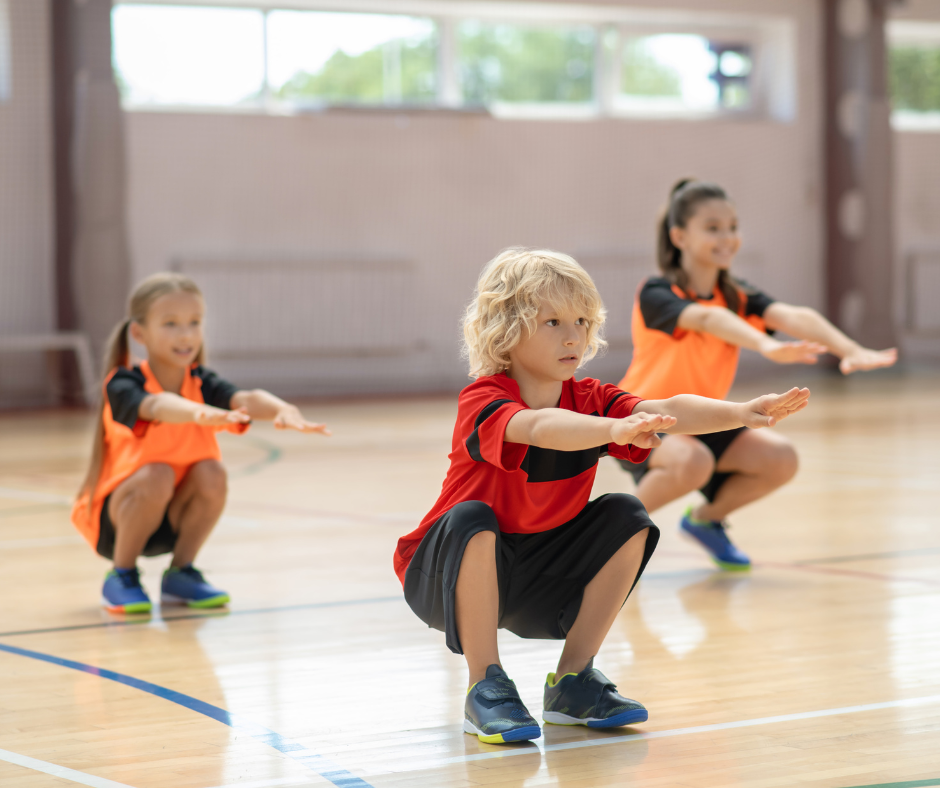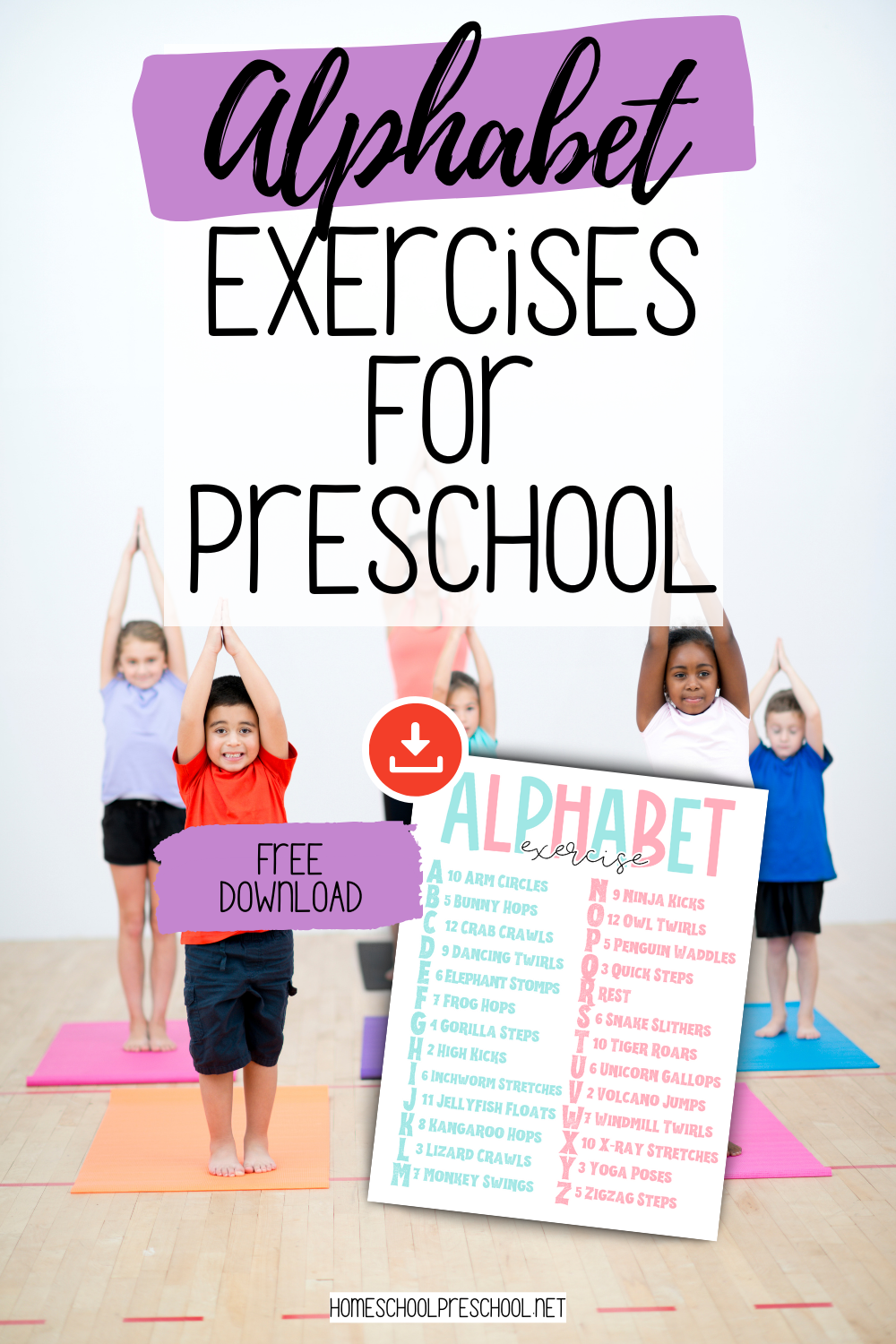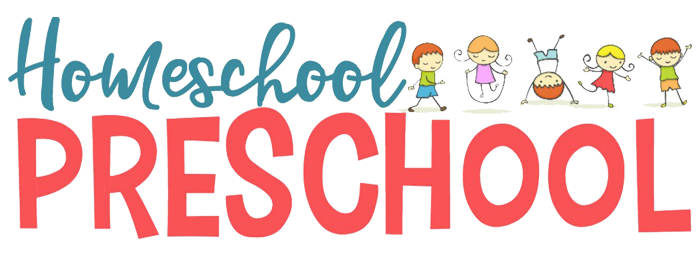Alphabet Exercises for Preschoolers
The early stages of childhood are marked by rapid physical and cognitive development, making them crucial years in a child’s life.
An essential part of this development lies in honing gross motor skills, which form the foundation for mastering daily activities from walking to writing.
Here’s where our exciting ‘Alphabet Exercises for Preschoolers‘ come in! These activities are meticulously designed to stimulate both physical and cognitive growth, making learning an invigorating and engaging experience for preschoolers.
As we delve deeper into this activity, you’ll discover the joy and educational value these exercises bring!

What are gross motor skills?
Gross motor skills encompass the abilities required to command the larger muscles in our bodies, crucial for activities such as walking, running, sitting, crawling, catch a ball, and more, laying the foundation for energetic and interactive play.
They’re crucial for a child’s physical coordination and body awareness. Developing these skills helps a child gain strength and confidence in their body.
It’s a necessary part of a child’s growth to be able to participate in daily activities at school or home, such as climbing stairs, carrying a backpack, or participating in sports and games.
Alphabet Exercises are a fun and engaging way to help develop these vital skills in your child.

Adapting Gross Motor Activities
Adapting gross motor activities to accommodate different abilities is key to ensuring that every child can participate and benefit. Flexibility is the essence of these adaptations, with activities tweaked according to each child’s capabilities.
For children with advanced motor skills, consider increasing the complexity of the tasks. You could introduce obstacles in their path while they perform the Alphabet Exercises or increase the speed for completion of certain activities.
For children who find certain movements challenging, simplify the tasks. This could mean reducing the speed, decreasing the range of motion, or providing additional support. The Alphabet Exercises can be conducted in a seated position or by using larger letters, making it easier for these children to participate.
Remember, the goal of these adaptations is to make the Alphabet Exercises inclusive and engaging for all children, promoting their physical development while ensuring they have fun in the process.

Alphabet Exercises for Preschoolers
This engaging activity includes 6 pages. One page includes all 26 exercises on one page. The remainder of the pages include the activities on pocket-sized cards.
To prepare the activity, just print and laminate the pages. Cut apart the cards if you’d like.
Completing the Activity
Hand out the large page to your child and ask them to find a comfortable place to sit.
Encourage them to follow your instructions as you call out each exercise by letter or title.
As they complete each activity, have them mark it off on their sheet with a pencil or sticker.
Alternatively, you can cut apart the cards and place them in a bowl or bag. Ask your child to pull out a card at random and complete the exercise on it.
For added fun, you can challenge them to complete all 26 exercises in one go!

Benefits of Alphabet Exercises
The Alphabet Exercises are not just an excellent way to develop gross motor skills, but they also offer a plethora of additional benefits. These exercises help to improve a child’s cognitive development by promoting letter recognition and boosting language skills.
Additionally, they foster social skills as children can perform these exercises in a group, learning to work together and respect turn-taking. Participating in these exercises can also enhance a child’s confidence and self-esteem as they master new skills and challenges.
Tips for Conducting Alphabet Exercises
Here are some tips to make the Alphabet Exercises even more effective and fun:
Consistency is Key: Make these exercises a regular part of your child’s routine. Regular practice will help improve their gross motor skills more effectively.
Praise Efforts: Always celebrate your child’s efforts, regardless of whether the exercise is performed perfectly. This positive reinforcement boosts their confidence.
Keep it Fun: Switch up the exercises and introduce exciting elements like music or storytelling to keep the activity engaging.
Including Alphabet Exercises in Daily Routines
You might wonder how to incorporate these exercises into your child’s daily routine. Here are a few suggestions:
Morning Routine: Kickstart your child’s day with a few Alphabet Exercises. It’s a great way to wake up their muscles and get their brains working.
Break Time Activities: During breaks from homeschool or remote learning, encourage your child to stretch their legs and engage in these exercises.
Family Fitness Time: Involve the entire family in the Alphabet Exercises. It’s a great way to bond and promote a healthy lifestyle.
Remember, the key is to make these exercises fun and engaging, so your child looks forward to doing them. As they enjoy these activities, they’ll be improving their gross motor skills without even realizing it!

In conclusion, our innovative Alphabet Exercises are more than just a fun activity; they’re a powerful tool for promoting your child’s physical and cognitive development.
By engaging in these exercises regularly, your child will steadily improve their gross motor skills, gain confidence, and enhance their cognitive abilities, all while having heaps of fun! It’s a win-win situation. So why wait?
Jump-start your child’s learning journey with these Alphabet Exercises today, and witness the wonderful transformation in their skills and confidence.
Remember the mantra: Keep it consistent, keep it fun, and always celebrate your child’s efforts!
